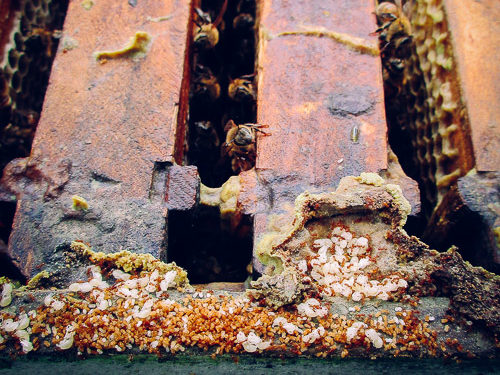
We all know Little Fire Ants (LFA) are a real pain in the a** (literally and figuratively) and the idea of treating an infestation can be overwhelming. While it’s true LFA have spread all over the Hawai`i Island, there are places where the ants are not widespread. There are also individual properties and farms where LFA have either not yet been introduced or where LFA have been successfully controlled. You heard that right; there is light at the end of this dark and dismal, ant infested tunnel (hahahaha).
For properties where LFA is not known to be established and/or is undergoing management/control efforts, prevention is your best friend. The first step for prevention is understanding “pathways” (how LFA get moved around). It’s true LFA can spread naturally by rivers, flood waters, possibly even high winds. But mostly, they are moved by people. LFA are really good at hitchhiking on plants, vehicles/machinery, fill materials (rock, cinder-soil, mac-nut mulch, etc…), rubbish, furniture, and more. When we take infested items and move them to a new location, the ants establish and infest/re-infest a property.
The movement of beehives for pollination and/or honey production is not immune to this concept and is frequently a pathway for spreading LFA. The ants’ nest in hive boxes but do not necessarily have any big impact on healthy hives. Also, beekeepers are ultra-conscious about the use of insecticides because certain insecticides and use patterns can have detrimental effects on the bees. For these reasons, and possibly others, beekeepers often do not manage LFA within their hives. This can (and does) greatly impact farmers, especially organic farmers who have no OMRI treatment options for LFA. Here we will focus on how to reduce risks of spreading LFA through movement of bee hives from one property to the next. We also hope to dispel any rumors regarding potential risks of LFA treatments to bees (no one wants to kill the bees! SAVE THE BEES KILL THE ANTS!!).
While the general concepts below can be applied to any situation, this is SPECIFIC to mobile apiaries and preventative measures. Management techniques and methods do vary depending on the situation so make sure to peruse our website and contact us for consultation for other management scenarios.
Survey
Surveying for LFA using the “peanut butter stick survey” method is the most import aspect of prevention. If you plan to move hives between properties:
- 2 weeks prior to moving hives, conduct a survey around the existing hives to assess whether disinfestation is warranted. If LFA are detected, treat around the hives and outward at least 20-30 ft using granular.
- 3-7 days prior to moving hives, repeat the survey and thoroughly inspect all hives being moved for presence of LFA. If LFA are detected, repeat the granular bait treatment, survey, and hive checks until hives are LFA free. DO NOT MOVE INFESTED HIVES.
- In addition, survey new location for LFA making sure to radiate outward at least 20-30 ft from where the hives will be, treating as needed when LFA are detected. This will provide an “LFA clean zone” as a buffer between the hives and any possible infestation on the property.
Quarantine
- Designate a single area where all incoming materials and newly obtained hives will be held and monitored prior to incorporating into the apiary or storage. This same area will be used every time, and should be large enough to accommodate farm/apiary activities.
- The quarantine area should be in a cleared area and well away from vegetation, trees, and other suitable habitat.
Treatment
Treatments are only necessary when LFA have been detected; however, they may be used prophylactically if desired.
- Treatments consist of using an oil based granular ant bait (ex: Amdro Fire Ant Bait, Antixx, Firefighter, Maxforce Complete, Probait, or Siesta). Be sure that your site is on the label prior to application. Bees are NOT attracted to oil based granular ant baits and application should have no effect on the colonies.
- Insect growth regulators, such as Tango in the Hawaii Ant Lab Gel Bait, are excellent for area-wide and long-term management of LFA infestations, and may be used on food crops. However, they do not provide rapid knockdown or kill the ants and are not recommended for preventative measures.
- DO NOT USE RESIDUAL PESTICIDES AROUND BEEHIVES OR ON FOLIAGE WHERE BEES MIGHT FORAGE. Residual pesticides (also called barriers) are those such as Talstar, Bifen, Ortho Home Defense, etc., and come as liquids or granules. Make sure you know how to tell the difference between a granular BARRIER and granular BAIT. If the directions say to “water in” after spreading the granules, it’s probably a barrier treatment.
- Ants nesting INSIDE the hive will likely forage on baits applied around the hives. However, they may also be manually removed using a hive tool or other scrapping tool to further reduce the already low risk of pesticide exposure.
